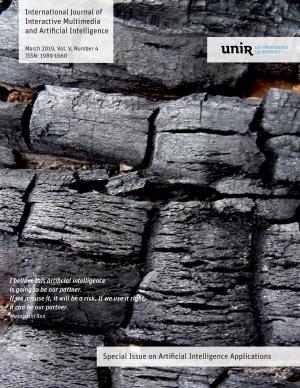- Year: 2019
- Vol: 5
- Number: 4
The term artificial inteligence (AI) basically refers to using machines to do things that we consider to be “intelligent”, that is, being able to either simulate or do things that we describe people as doing with their cognitive faculties. A more complete definition presents artificial intelligence as the ability of a machine to perform cognitive functions we associate with the human minds, such as perceiving, reasoning, learning, interacting with the environment, problem solving, and even exercising creativity. The concept is related to machines that process huge amounts of information, learn from the results of their actions and never rest. The concept of AI makes us think that human genius has managed to create something that seems to exceed its own capacity.
The term was introduced by Alan Turing in 1950, so it is actually a pretty well-known field. However, we have seen an acceleration lately in the use of the AI due to two main factors. First, computational power is rising with exponential growth, and second, the amount of available data has grown at an impressive rate in recent years. To a large extent, then, the exponential growth in data and in computational power has led to the hype of AI.
One of the remarkable aspects of AI is the degree to which it is an extension of the features that we have seen in data and analytics. One of the enabling factors for machine learning to take hold is the large amounts of data. We have seen more and more data collected by companies and all kinds of organizations, be it transactional data, voice data, or data from the Internet of Things in the physical world. When you have all that data, you can extend the work you have done in analytics with AI techniques. Therefore, you will see methodologies about machine learning and deep learning with new neural networks that are applied to those vast amounts of data. In this sense, there are four technology systems of which machine learning is just part of and where some of the recent advancements and developments have been happening:
- Physical AI, i.e., robotics and autonomous vehicles.
- Computer vision, i.e., image processing or video processing.
- Natural-language processing, be it spoken language particularly, or written language. We are seeing a lot of natural-language work being done.
- Virtual agents or conversational interfaces; this is the ability of systems to roughly converse with you whether by voice or online through chats.
To some extent, artificial intelligence is going through a bit of a hype cycle. There are a lot of applications, a lot of industries and activities, and a lot of value is at stake. But it can be said that today we are in a phase where we have applications which we would call narrow AI. Those are very specific tasks that machines today can do better than human beings. But there is that question about a general AI, where you have a broader spectrum of capabilities that can be managed by a machine.
We are beginning to enter that phase. And we should not forget that the speed of development is exponential in those key technologies. It is coming much, much faster than we can imagine. As Peter Diamandis says, cumulative “intelligence” (both artificial and human) is the single greatest predictor of success for both a company or a nation.
Therefore, the suggestion for leaders of all types of organizations (companies, hospitals, government agencies, etc.) would be to start an analytics transformation now if have not done so already. This will require them to build capabilities, build technology and start the change in the organization, which will also be necessary to ultimately go into AI-enabled processes.
We can ask ourselves whether there is a case for a portfolio-of- initiatives approach, where one considers what can be done here and now.
In this sense, one possible suggestion would be to take the right use cases at the right point in time. Getting started now with the easier and simpler use cases also prepares us to take the more advanced use cases in the future. Empowering organizations to become analytics- or AI- driven is key to success in the future.
With these ideas in mind, we have prepared this special issue. It has been designed with the primary objective of demonstrating the diversity of fields where AI is used and, consequently, how it is gaining increasing importance as a tool for analysis and research. In this sense, there are works related to the following topics: the use of AI with the IoT, campaign management, topic models and fusion methods, sales forecasting, price forecasting for electricity market, NLP techniques in computational medicine, evaluation of patient triage in hospital emergency settings, algorithms for solving the assignment problem, scheduling strategy for scientific workflow, driver fatigue detection mechanisms, virtual reality and specialized training, image segmentation, web service selection, multimedia documents adaptation, 3D navigation in virtual environments, multi-criteria decision-making methods and emotional states classification.
Electronic File Download
IJIMAI20195_4.pdf9.05 MB

